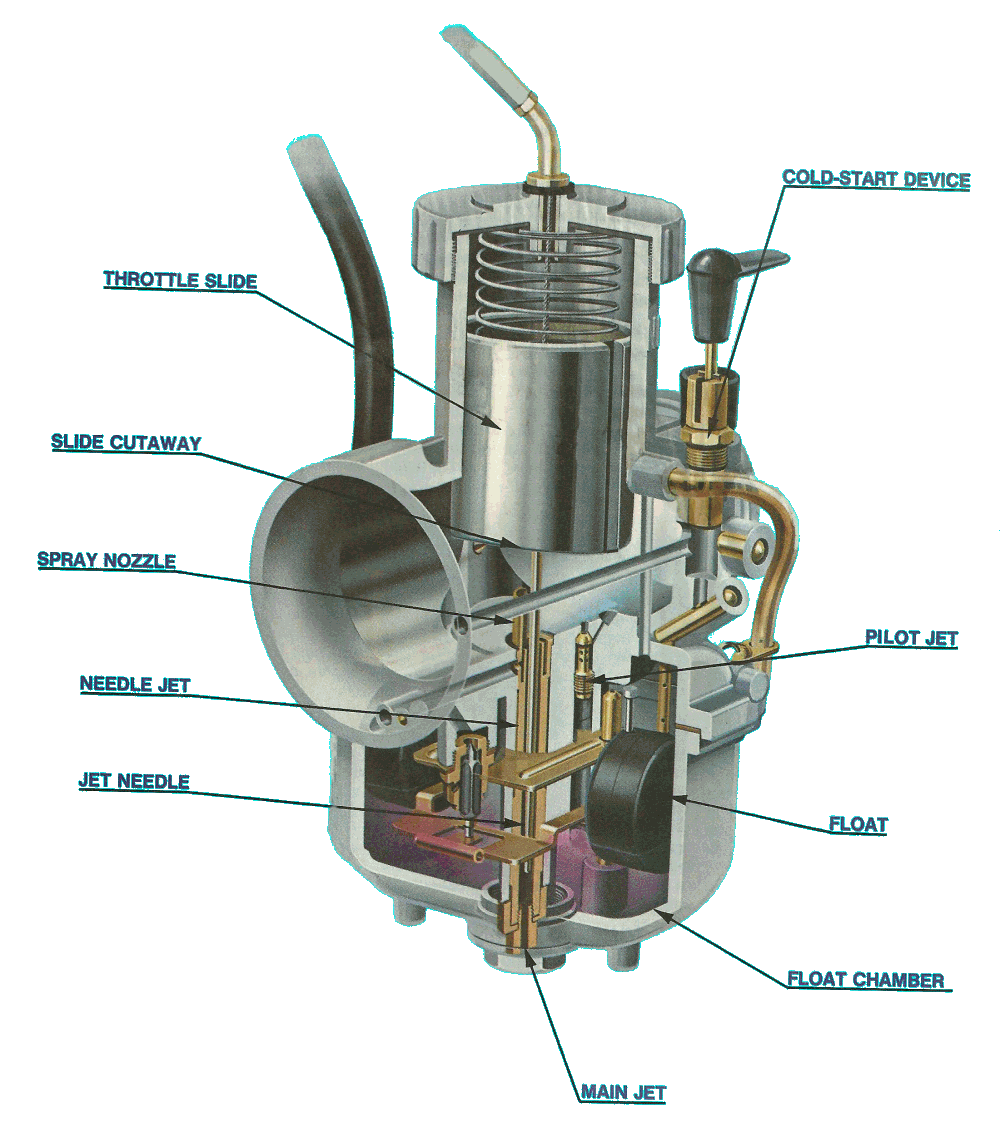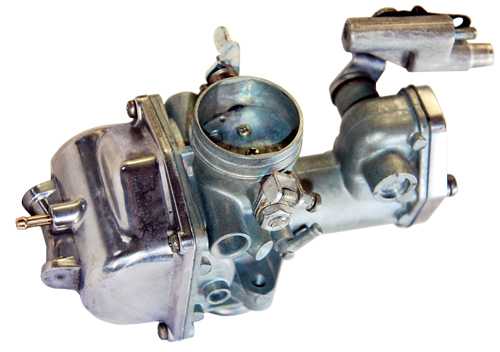Why Do Motorcycles Use Carburetors
The first carburetor was invented by Samuel Morey in 1826.
A carburetor basically consists of an open pipe through which the air passes into the inlet manifold of the engine. The pipe is in the form of a Venturi: it narrows in section and then widens again, causing the airflow to increase in speed in the narrowest part. Below the Venturi is a butterfly valve called the throttle valve — a rotating disc that can be turned end-on to the airflow, so as to hardly restrict the flow at all, or can be rotated so that it (almost) completely blocks the flow of air.
This valve controls the flow of air through the carburetor throat and thus the quantity of air/fuel mixture the system will deliver, thereby regulating engine power and speed. The throttle is connected, usually through a cable or a mechanical linkage of rods and joints or rarely by pneumatic link, to the accelerator pedal on a car or the equivalent control on other vehicles or equipment. (source: Wikipedia)
When buying a motorcycle, there are too many critical decisions to be taken beyond choosing between a make and model. One of these decisions is choosing between a carbureted or fuel-injected bike, are difficult for many riders.
Co-founders of custom motorcycle garage & repair shop Vintage Steele Josh Steele and Chris John stated that, “Our personal preference is carbureted air-cooled systems. Everything is exposed on those bikes, making them easy to work on. You also have the most control over a carbureted bike, since there aren’t any blackbox electronics to deal with.”
It is true, that market is gradually drifting towards replacing carbureted bikes with fuel-injected (EFI) bikes for their ease of operation, but experts have differing opinions. The majority of leading custom motorcycle builders specified that they strongly prefer to work on carbureted bikes over EFI bikes for their simplicity, openness, and ties to the heritage of motorcycling.
However, this is not the only reason why carburetors are preferred in the world of motorsports. Longevity, easy to install, cheap to manufacture, easy to service, performance modification can be easily done on it, tolerant to bad quality fuel, can be opened up individually without disturbing the engine, on the go tuning and setting possible, not dependent on a battery / electrical charge are some of the reasons carburetors still rule the world of the maniacs.
Above and beyond all else, the carburetor’s trump card is its low cost of buy-in. That epic price gap is fairly classic of the automotive aftermarket, where a full EFI package will typically run four to five times more than its carbureted equivalent.
Motorcycles with more than one cylinder, the scene is a little different. To annex the best performance, people prefer to have different air-fuel ratio for different cylinders, which is something a Fuel Injection cannot do and can be achieved easily in case of carburetors.
Jim McFarland said “Carburetors will become obsolete in seven to eight years.” February 2009 issue of Car Craft and the auto industry has been recalling that sentiment for some time now, more than 20 years, in fact. While there may be newer and more sophisticated options, there may never be one to match the carburetor for versatility and performance at anything approaching its cost.
A well tuned carbureted motorcycle returns equally good fuel efficiency, can deliver same capability and once warmed up the engine can feel same in operation.



